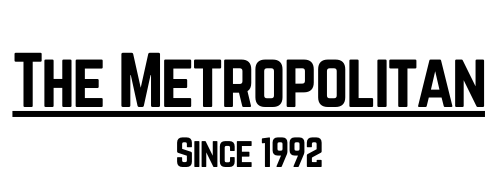Guest Writer
Brok Junkermeier
From the outside looking in, prison life holds multiple views and stereotypes. Movies like “Desperate Measures” and TV shows like “Locked Up: Raw” are exaggerated. Movies and shows get their concepts from actual prison scenarios and situations, but there is more to prison life than people walking the yard in jumpsuits and standing at a single-windowed door with hope on the other side. To truly have an opinion on prison, you have to experience it firsthand. Firsthand is the most accurate. In my ten years of being incarcerated, diversity of one’s situation stands out the most. Prisoners come from different walks of life. Each incarcerated person has a set of guidelines while being locked up that they are advised to follow to make their stay easy and simple. Guidelines does not mean mandatory. They are basic suggestions to improve your personal file, which can provide positive benefits when released.
Programming varies for the individual. Violent crimes carry a different set of requirements than someone with a non-violent crime. Someone with a homicide, burglary, or assault would more likely follow a curriculum of anger management, building character, changing faces (a class that challenges you to think first and react more reasonably during a negative situation), and restorative justice. The two most common requirements in prison are treatment and programming. This topic is controversial with positives and negatives. An inmate’s point of view on the subject carries mixed opinions and emotions.
Michael Stewart began his incarceration in April 2000. He was sentenced to life (30 years) plus 9 years. Stewart carries a positive mindset throughout his time in prison. According to him, programming creates opportunities. “Don’t make it hard on yourself,” he said. “Take the opportunity when presented.” The biggest things the parole board looks for are programming and conduct (the way you carry yourself/discipline record). Treatment programs such as “Atlantis” (Stillwater’s program) are designed to move an inmate into a drug-free and positive direction. Stewart does not agree with it. He feels it has a “one size fits all approach.” A drug addict wouldn’t go to AA, and vice versa (somebody with an alcohol problem wouldn’t go to NA). When Stewart arrived at Stillwater, programming wasn’t recommended to him, but he started doing it right away anyway. His goal was to make it easy to present himself to members of the parole board, stating that “we are our best sellers.” It’s simple, programming creates opportunities. The key is to do time for yourself. Nothing is guaranteed, but the priority is to get out. Stewart explains how he does everything he can to succeed at being a better man and individual. “I can’t let another man take my hope [by] accepting his negative way of thinking. So I’m going to fight for my life. I have never seen somebody want something and quit.”
Damien Jones began his incarceration in 2013. This is his second prison term. His first time was in the 90’s. At that time, he was interested in programming and succeeding. Back then, different programs were provided. “Nowadays, inmates don’t have anything to feed their brains. No certification programs. Just balloon folding,” says Jones. When it comes to programming as a whole, there is a significant difference between programs that help you and hurt you. Some programs are designed to be beneficial, authentic and sincere. Others, like Anger Management, make you jump through hoops. Jones sums up the difference by saying by
saying that “forcing an individual is not genuine.” Some programs, like Prison Fellowship, are beneficial and sincere. Other programs are a formality and are misused. “Half the time, there is no challenge. Guys have gifts in here, but are still not allowed to succeed,” says Jones. Jone’s view on treatment programs is similar to Stewart’s. He focuses on the fact that if an individual does not complete an in-prison treatment program, this results in ISR (supervised release). Supervised release requires a person to check in with their parole officer and are subject to random check-ins for a six month period after being released. In other cases, inmates can’t transition to minimum facilities. Treatment is financially driven. The program would not be offered if the state did not get money for each bed filled by an incarcerated individual. Jones states that “You never get what you need, but it’s a formality to do what they think you need to do,” and adds that “some men really want to be a better person and not go back and forth between the hole (solitary confinement/segregation) and being a drug addict.”
The reality of the situation is that programming is not effective when people come to prison and leave with a habit. Most times that habit is drugs. But the longer I am incarcerated, the more I learn and realize that there are many forms of addiction within these walls. When it comes to the DOC, everything is based on where to get grants and money from. Jones shows his frustration and irritation by explaining that “80 percent are going home and leave worse than when they came in. People lie dormant, until awakened. Idle time is a devil’s workshop.” In recent days, with staff shortage, Covid and a shortage on necessities like hygiene items, it leaves little incentive for an inmate to be patient and behave. In Jones’s current situation and mindset, it’s simple: “No programming, no soap, and I’m not being released? I’m going to drink, get high, and kick your ass. I have nothing to lose.”
There are two sides to every story. The beginning to each one is different but the endingis the same. The formalities are the DOC’s benefit. But the inmates still have their own. Stewart says it best. “They got a hand, but you play yours too.”


